Abstract
1. Measurements have been made of heat production and changes in levels of phosphorylcreatine (PC), ATP and lactic acid resulting from contraction of tortoise muscle under anaerobic conditions.
2. The only significant chemical change found was a break-down of PC.
3. The amount of heat produced per mole of PC split (-ΔH) was 13·18 ± 1·04 kcal/mole (mean and S.E. from thirty-five observations).
4. (-ΔH) is probably rather greater in tortoise than in frog muscle. The value of (-ΔH) cannot easily be accounted for by the known processes accompanying PC splitting in either type of muscle.
Full text
PDF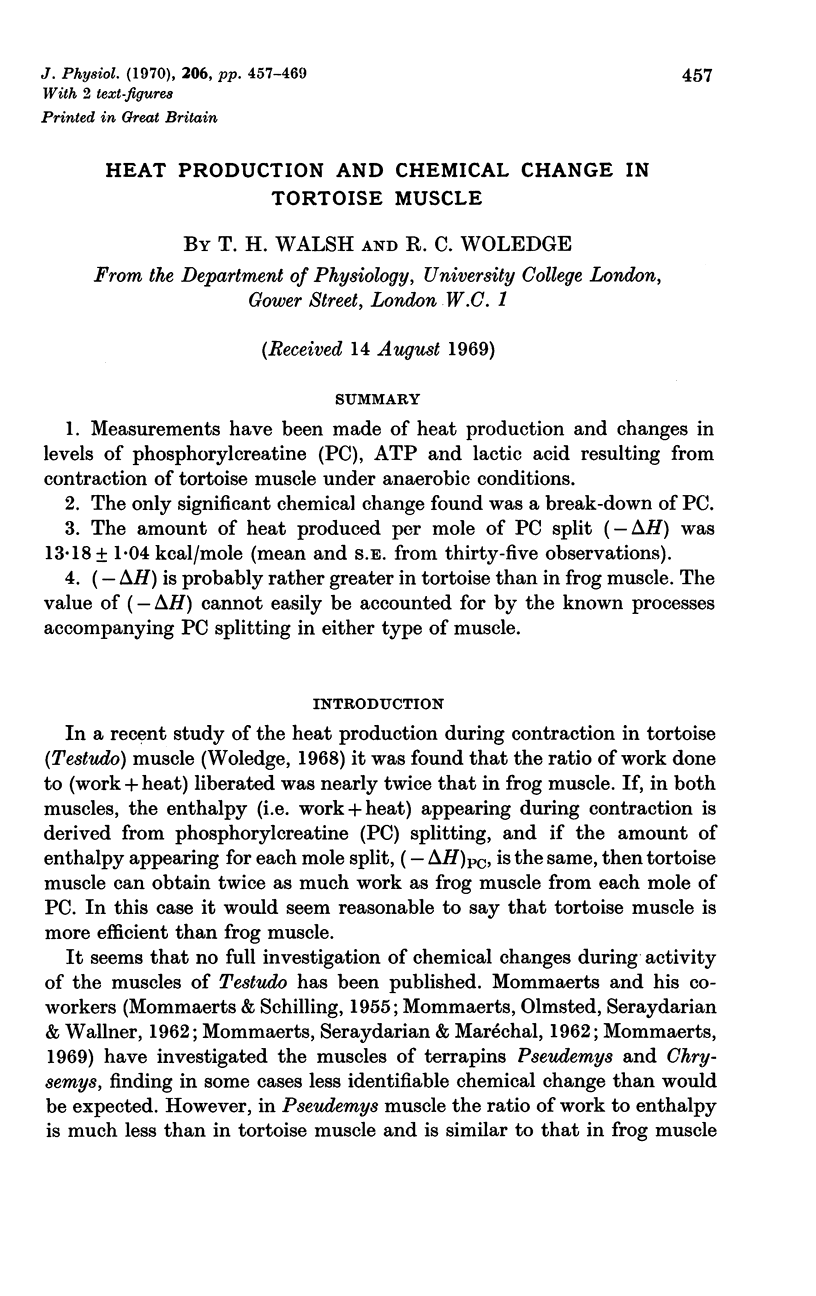
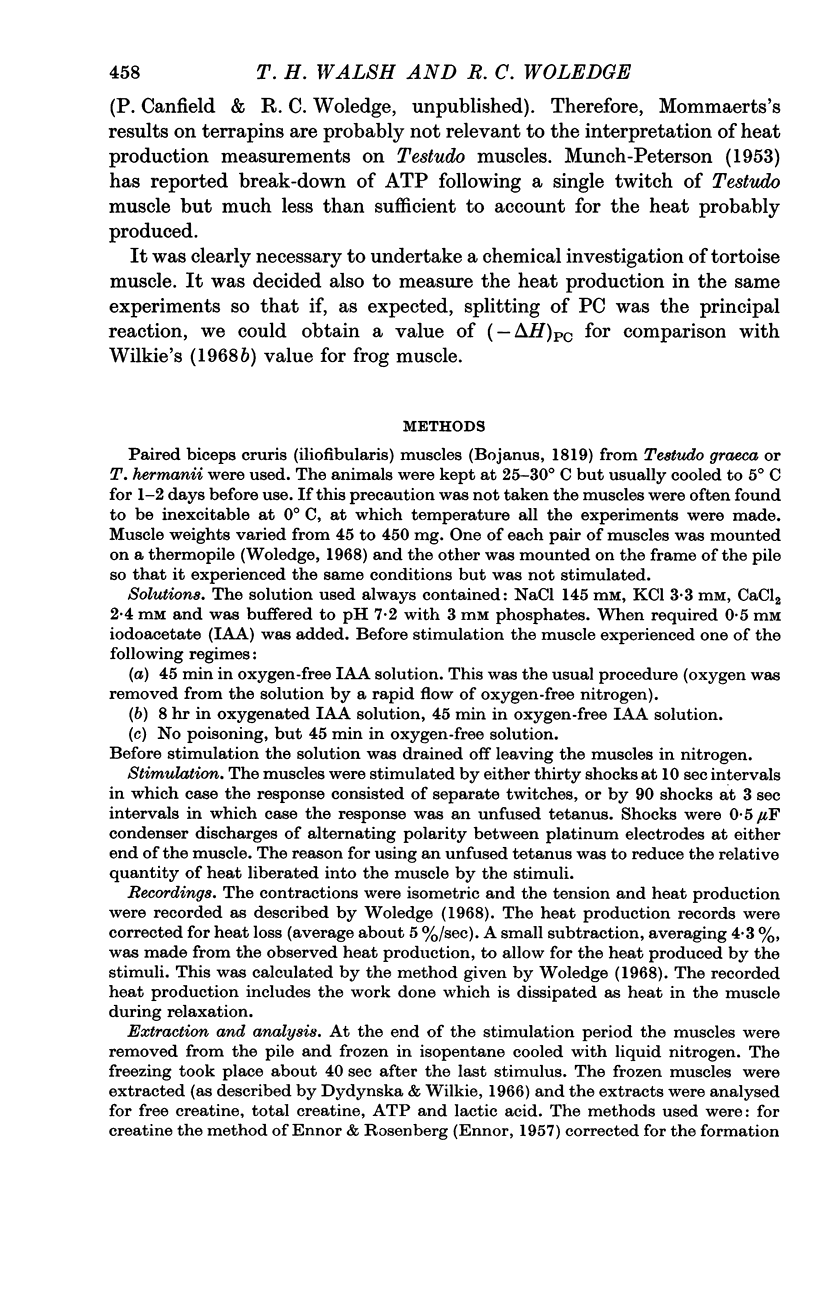
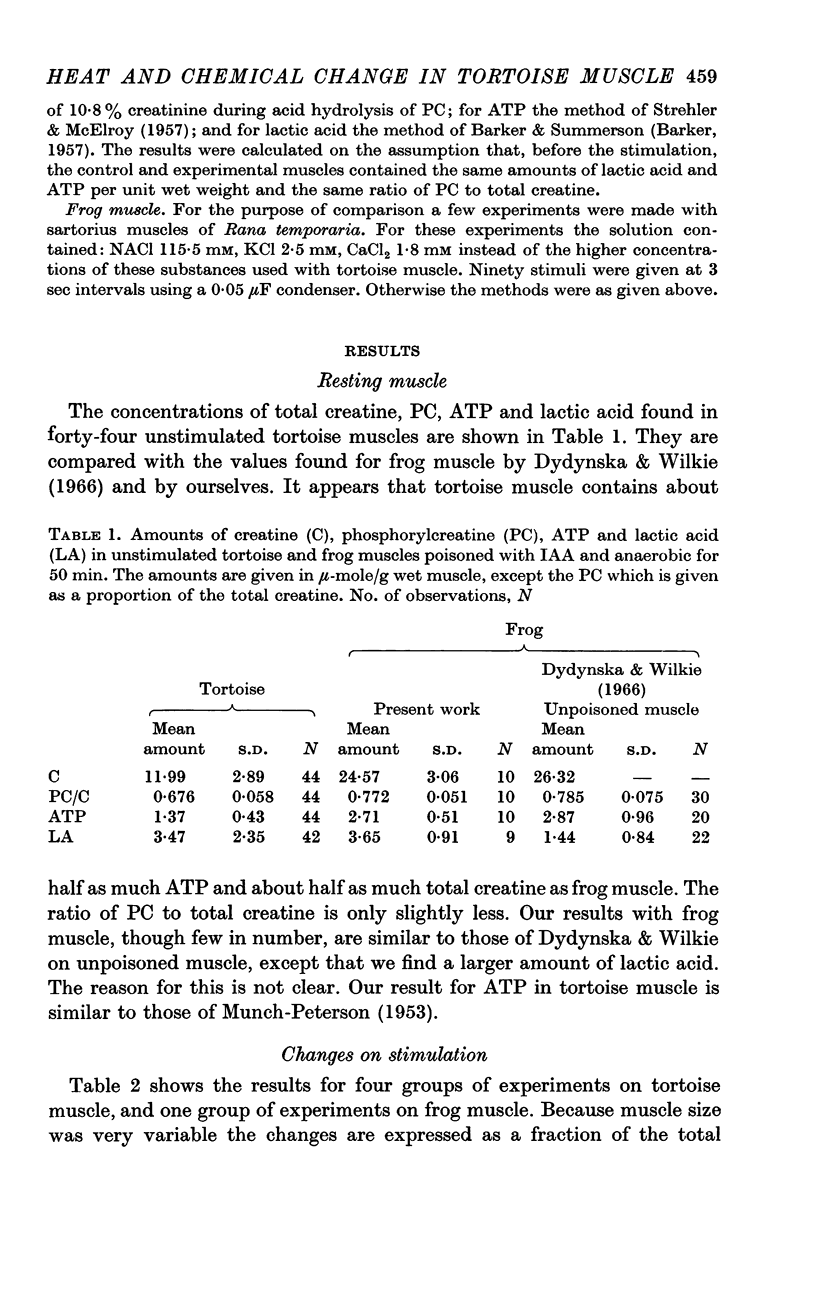
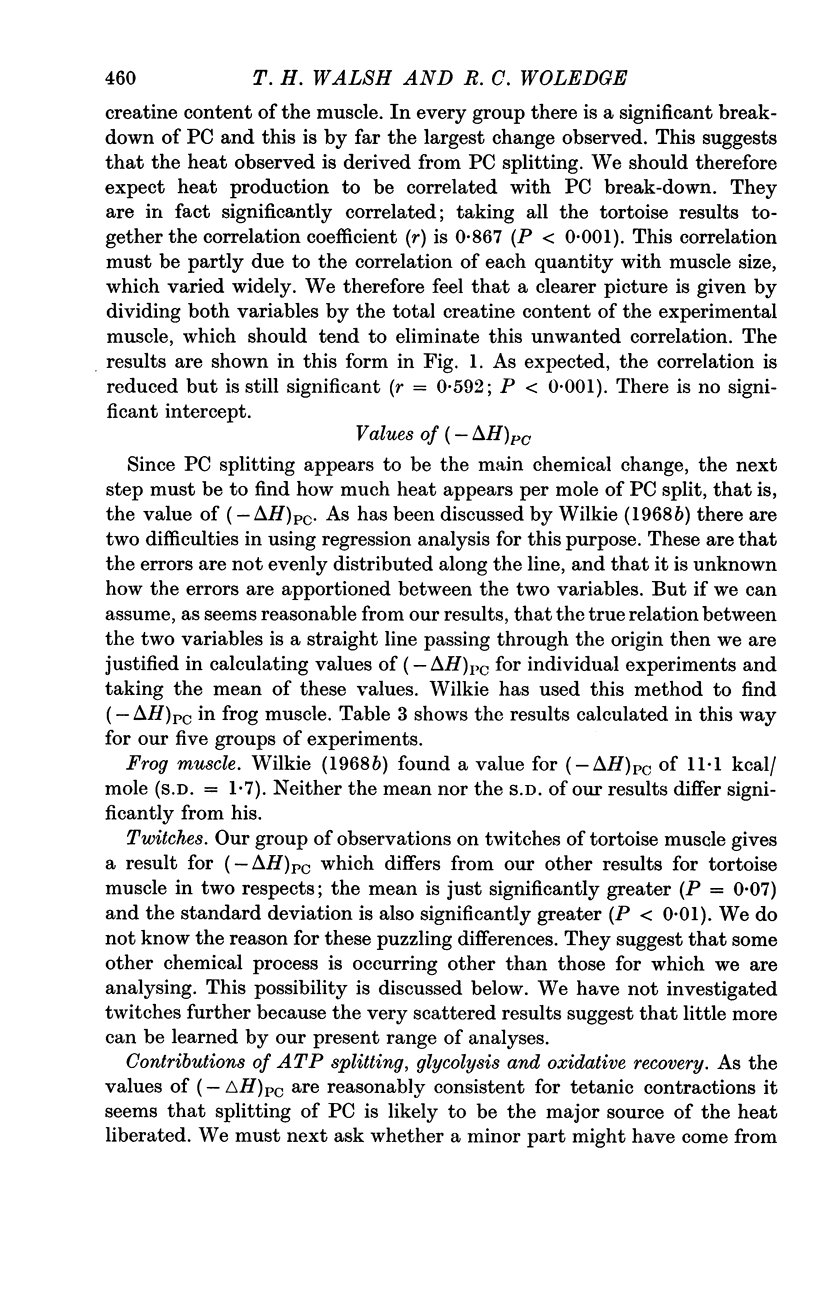
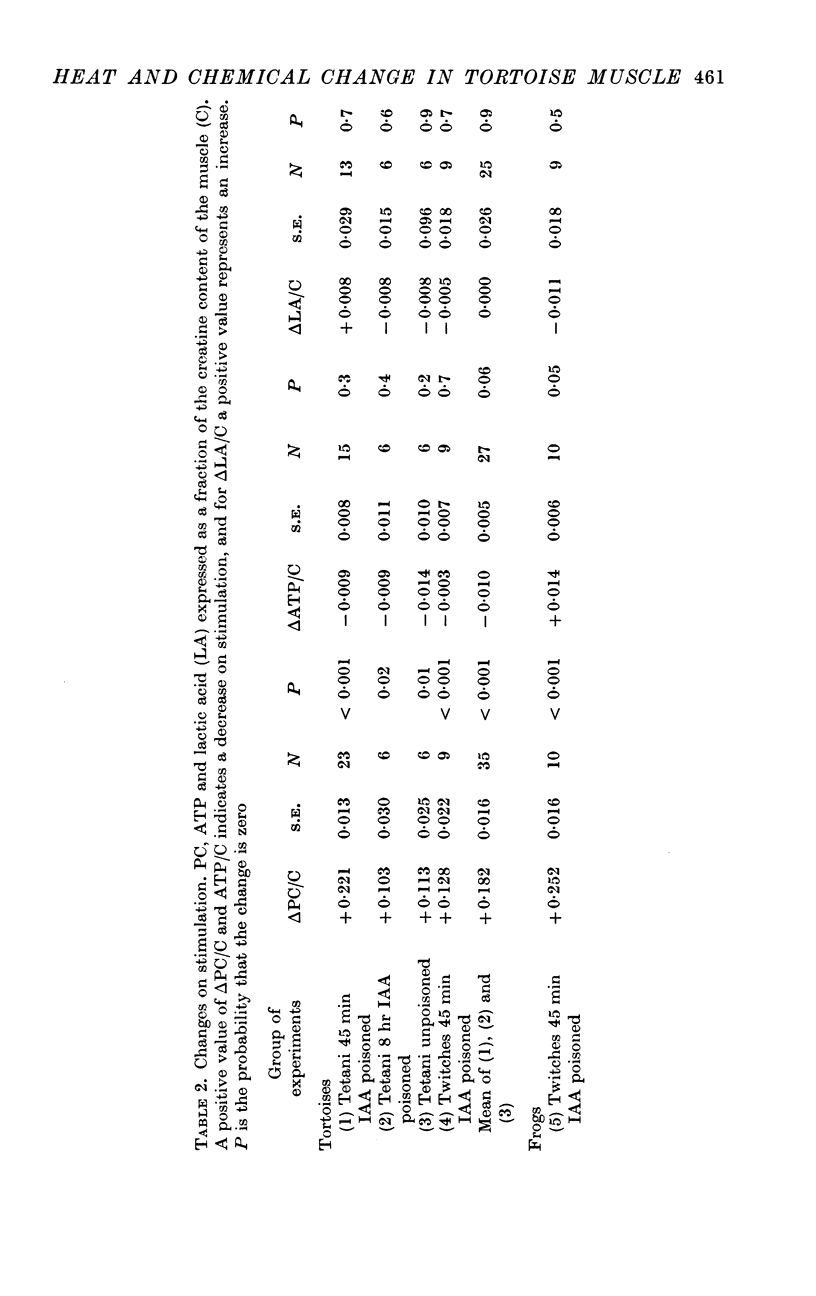
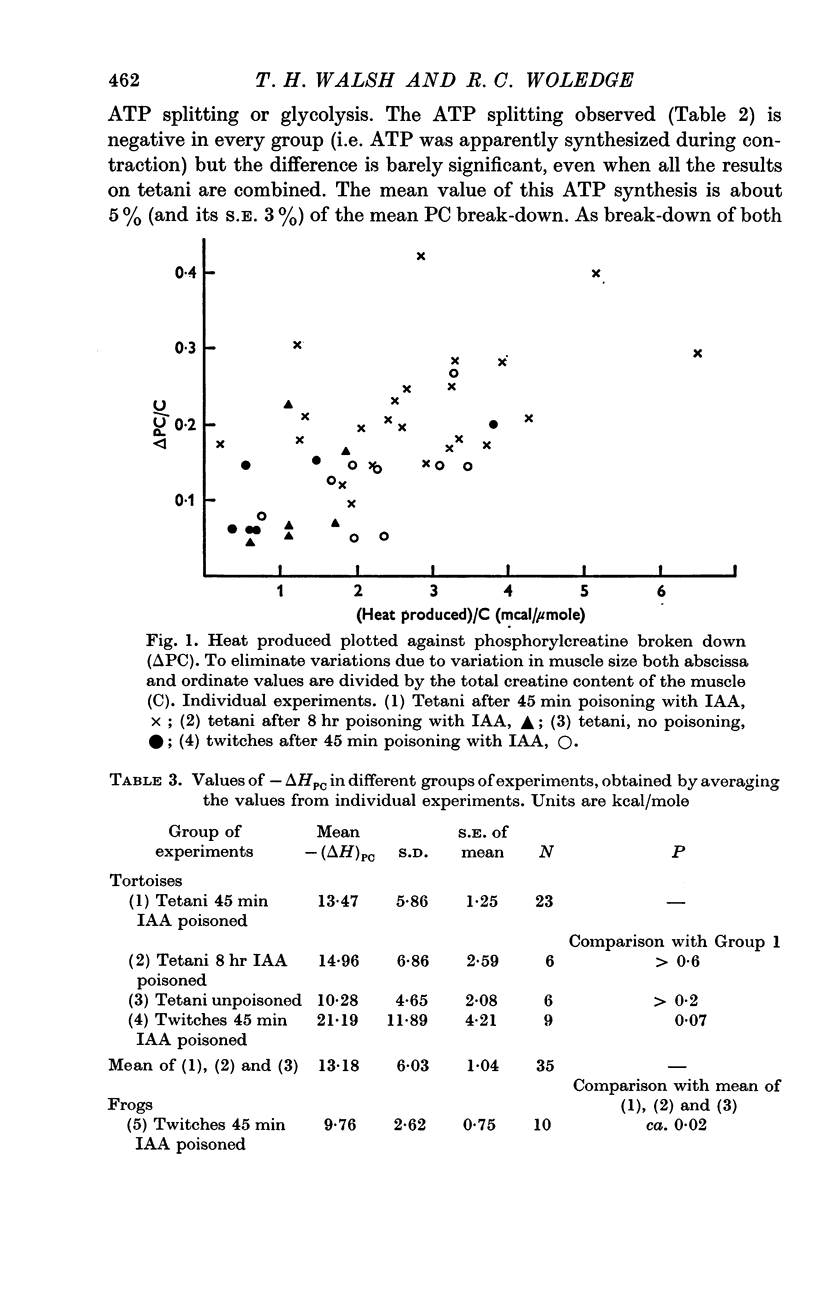
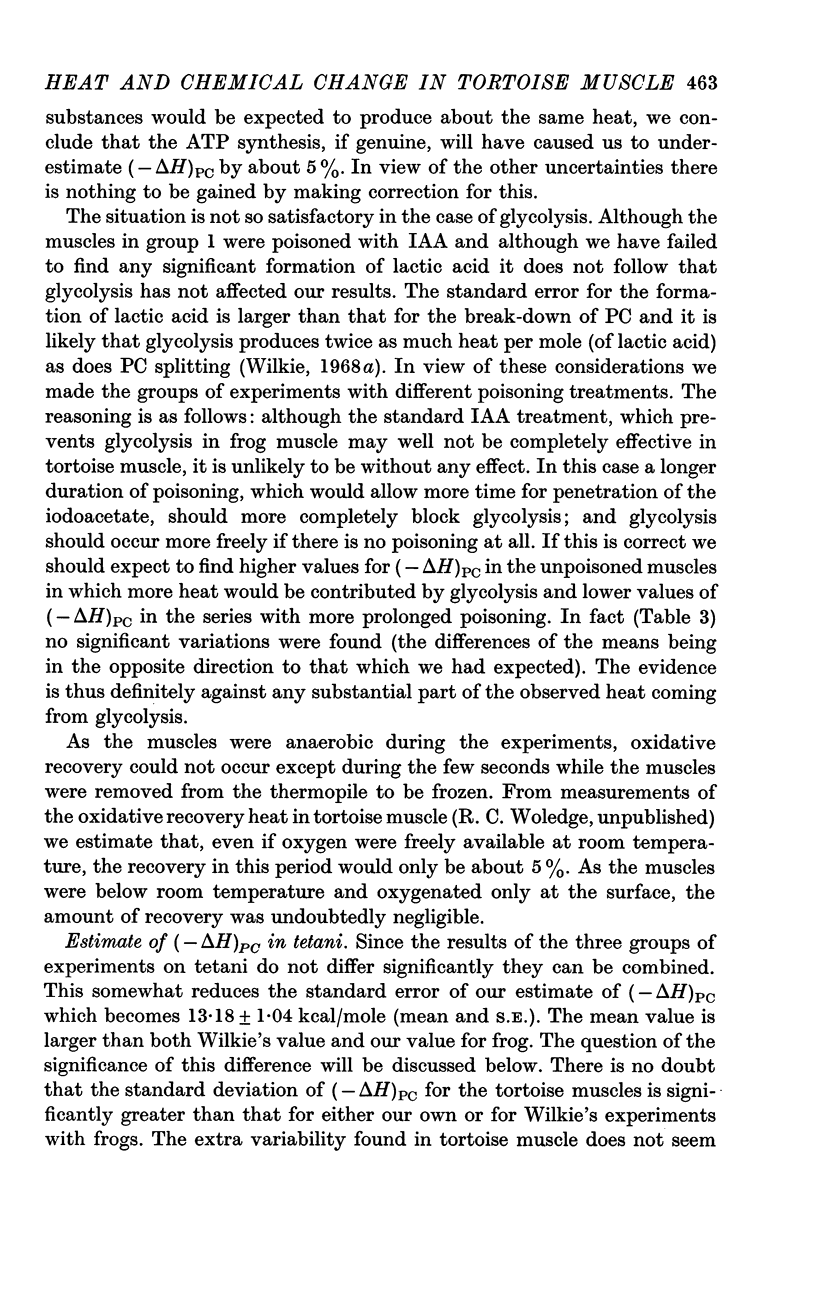
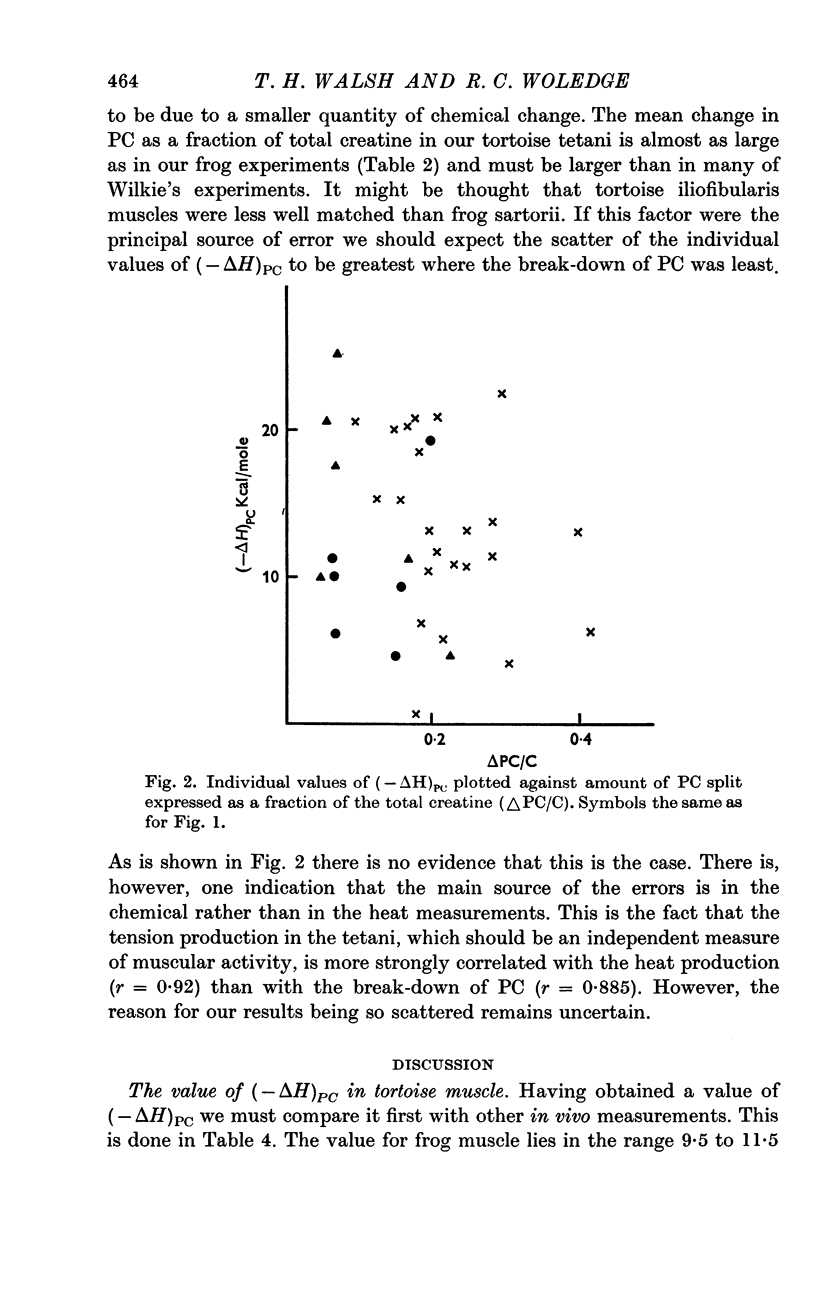
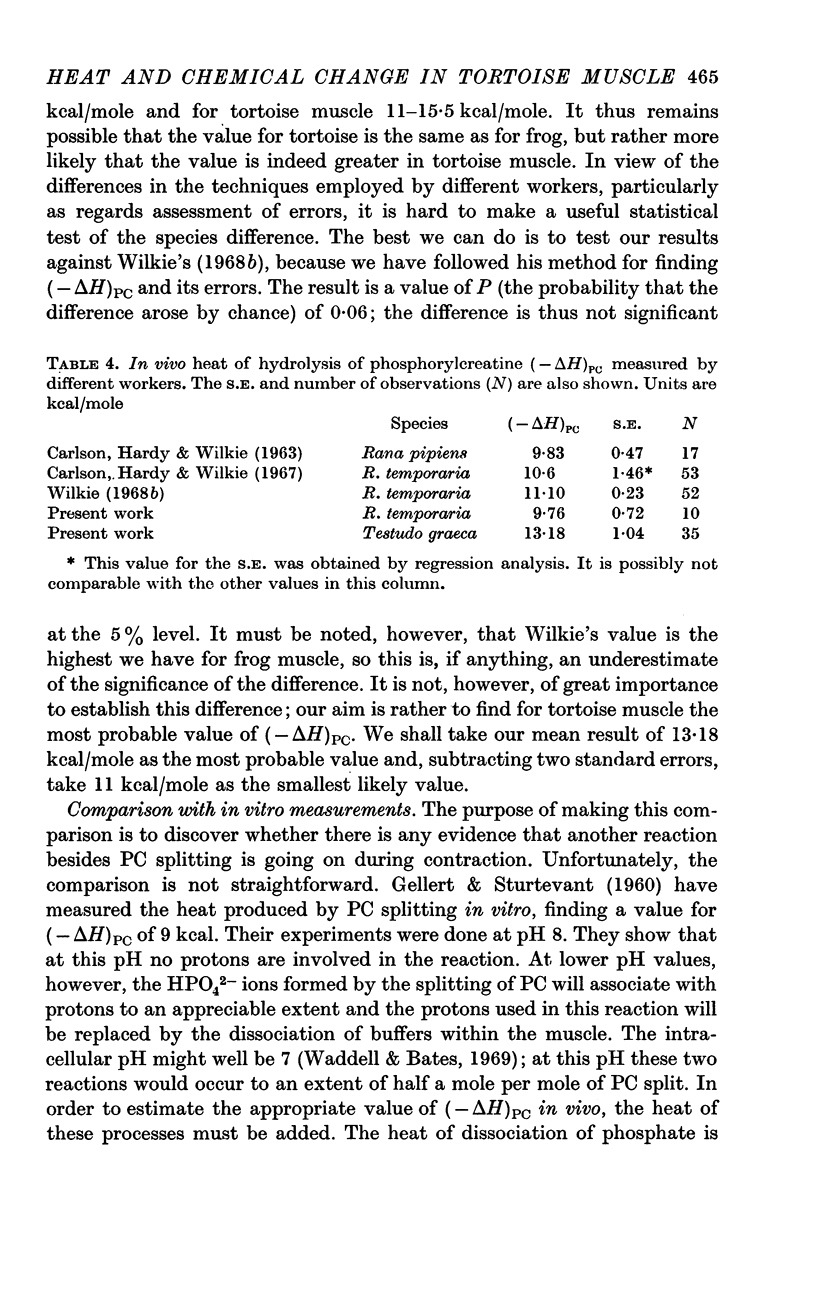
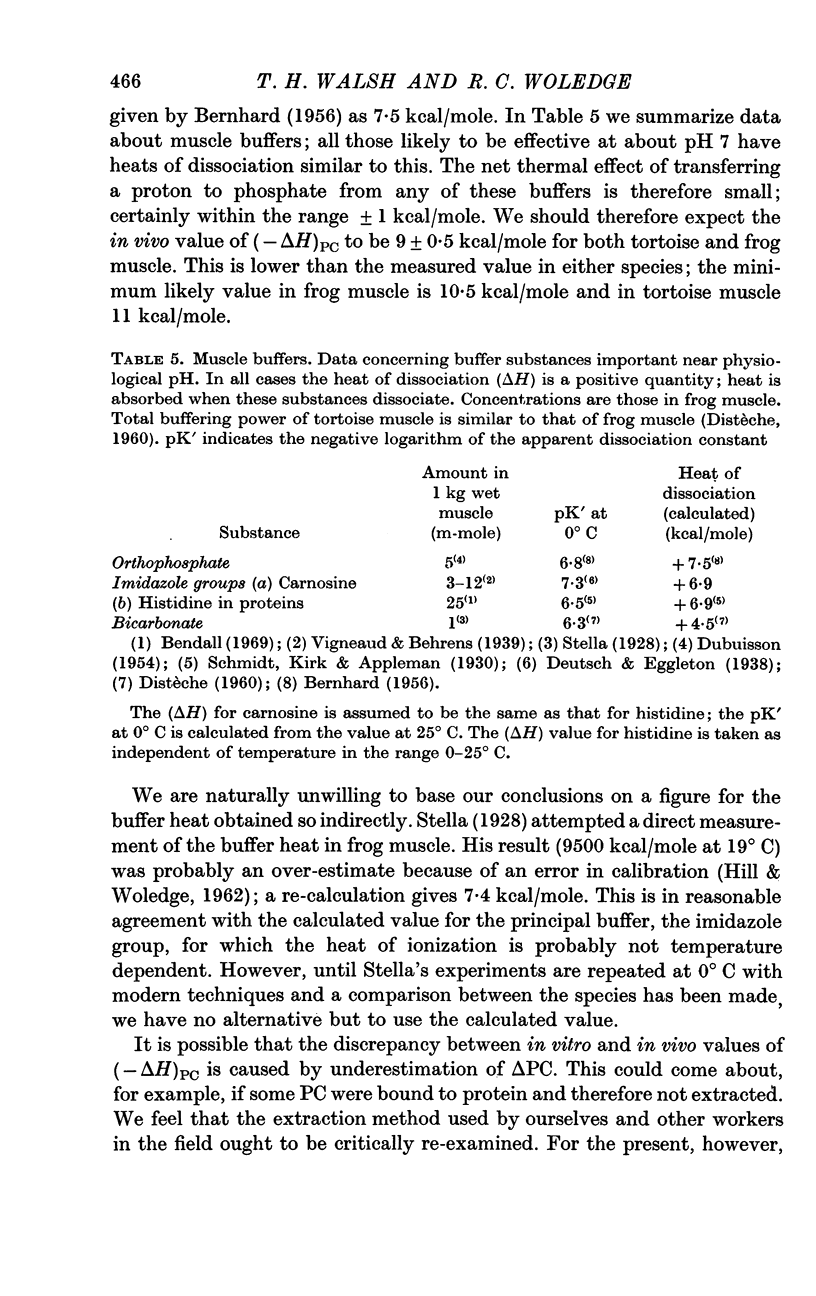
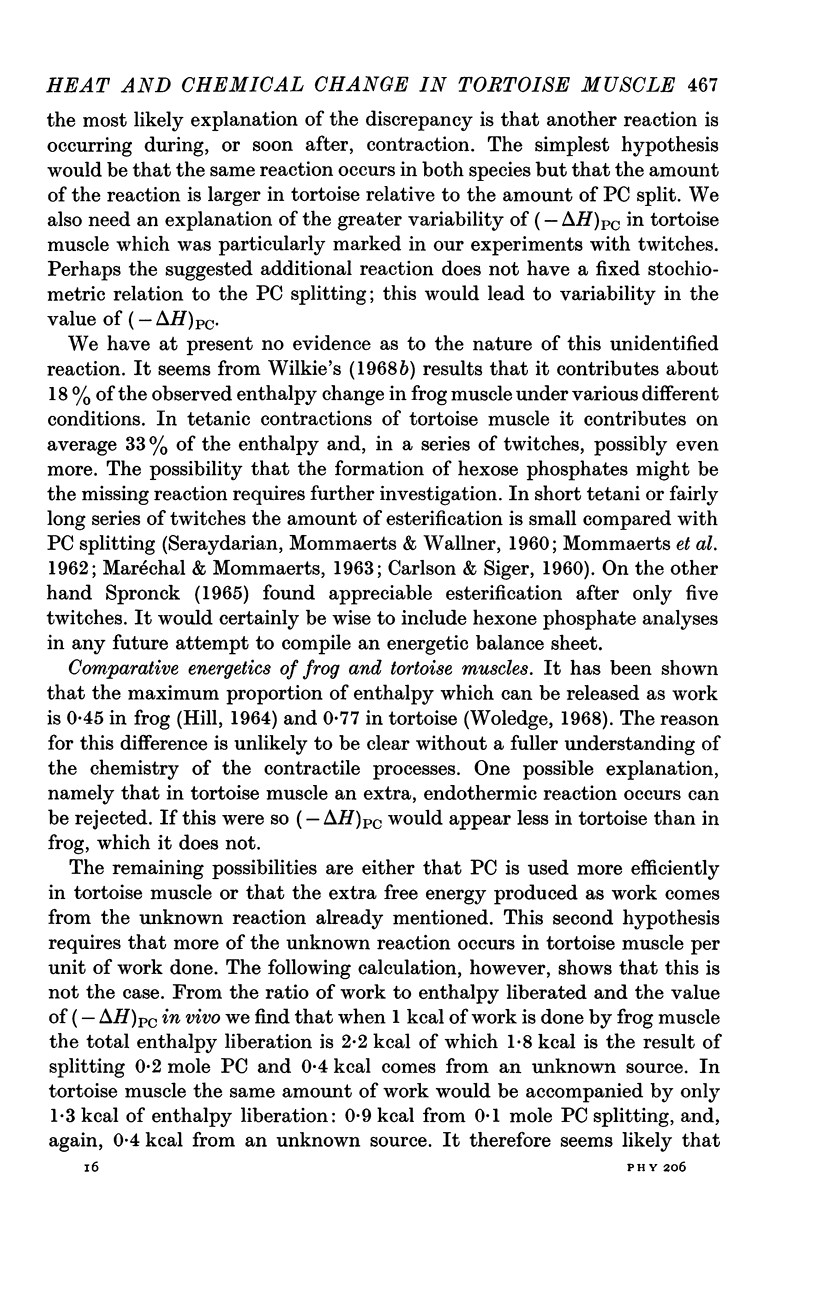
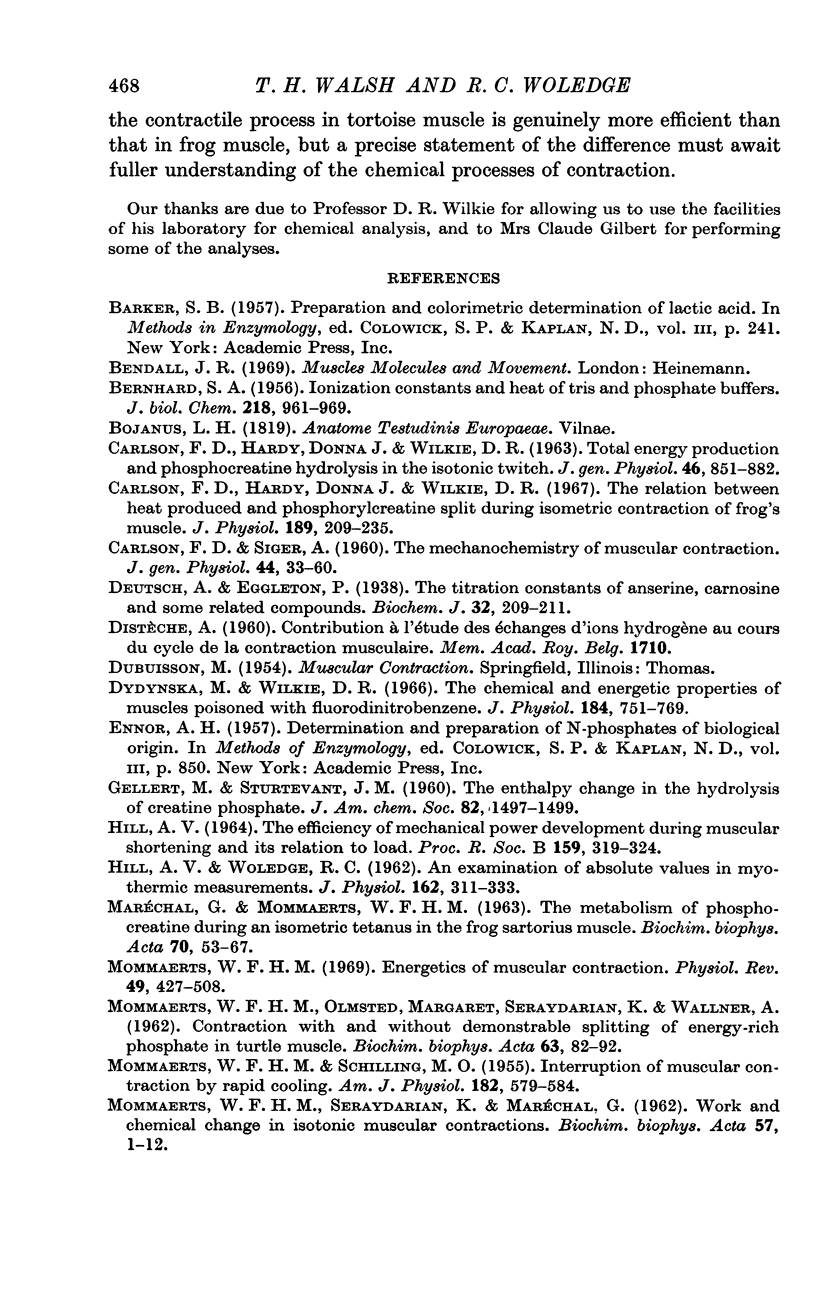
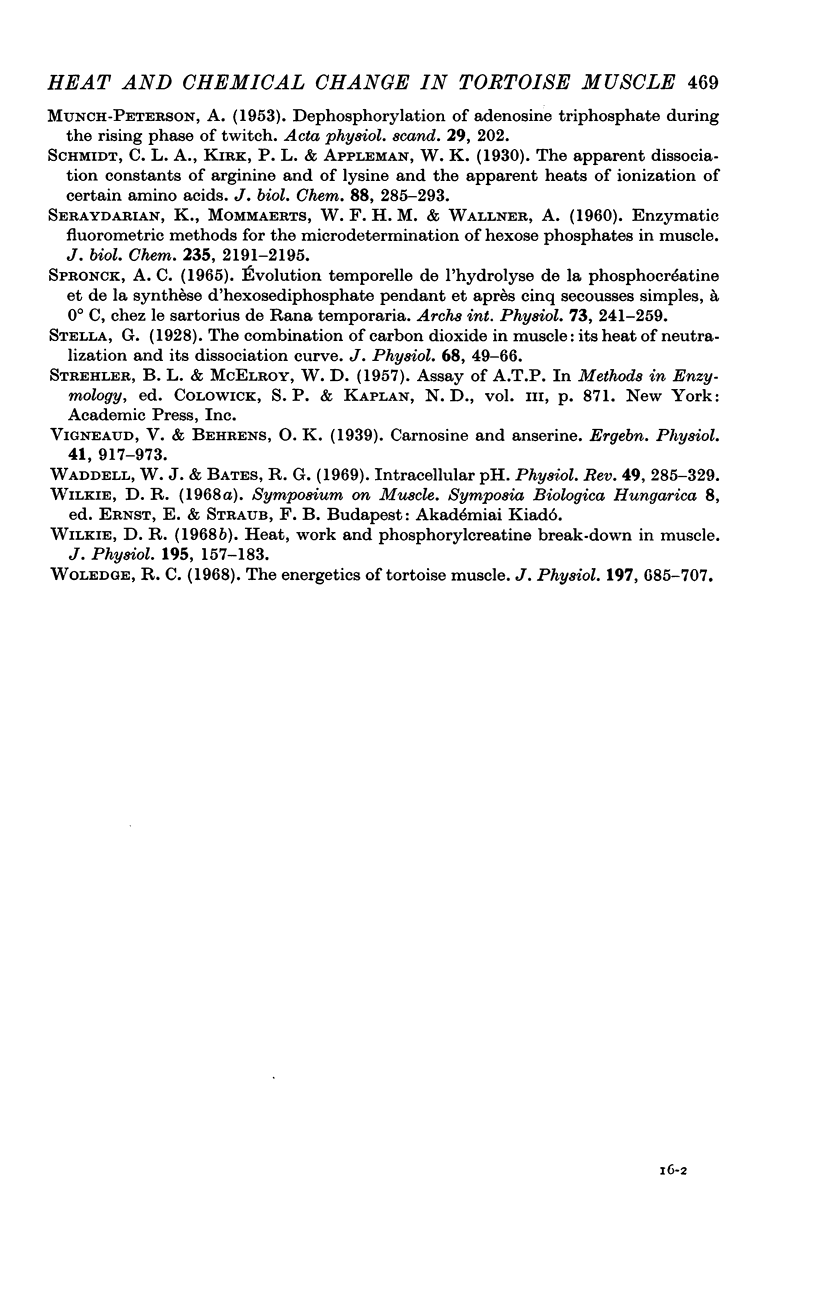
Selected References
These references are in PubMed. This may not be the complete list of references from this article.
- BERNHARD S. A. Ionization constants and heats of tris(hydroxymethyl)aminomethane and phosphate buffers. J Biol Chem. 1956 Feb;218(2):961–969. [PubMed] [Google Scholar]
- CARLSON F. D., HARDY D. J., WILKIE D. R. Total energy production and phosphocreatine hydrolysis in the isotonic twitch. J Gen Physiol. 1963 May;46:851–882. doi: 10.1085/jgp.46.5.851. [DOI] [PMC free article] [PubMed] [Google Scholar]
- CARLSON F. D., SIGER A. The mechanochemistry of muscular contraction. I. The isometric twitch. J Gen Physiol. 1960 Sep;44:33–60. doi: 10.1085/jgp.44.1.33. [DOI] [PMC free article] [PubMed] [Google Scholar]
- Carlson F. D., Hardy D., Wilkie D. R. The relation between heat produced and phosphorylcreatine split during isometric contraction of frog's muscle. J Physiol. 1967 Apr;189(2):209–235. doi: 10.1113/jphysiol.1967.sp008164. [DOI] [PMC free article] [PubMed] [Google Scholar]
- Deutsch A., Eggleton P. The titration constants of anserine, carnosine and some related compounds. Biochem J. 1938 Feb;32(2):209–211. doi: 10.1042/bj0320209. [DOI] [PMC free article] [PubMed] [Google Scholar]
- Dydyńska M., Wilkie D. R. The chemical and energetic properties of muscles poisoned with fluorodinitrobenzene. J Physiol. 1966 Jun;184(3):751–769. doi: 10.1113/jphysiol.1966.sp007946. [DOI] [PMC free article] [PubMed] [Google Scholar]
- HILL A. V. THE EFFICIENCY OF MECHANICAL POWER DEVELOPMENT DURING MUSCULAR SHORTENING AND ITS RELATION TO LOAD. Proc R Soc Lond B Biol Sci. 1964 Jan 14;159:319–324. doi: 10.1098/rspb.1964.0005. [DOI] [PubMed] [Google Scholar]
- HILL A. V., WOLEDGE R. C. An examination of absolute values in myothermic measurements. J Physiol. 1962 Jul;162:311–333. doi: 10.1113/jphysiol.1962.sp006935. [DOI] [PMC free article] [PubMed] [Google Scholar]
- MARECHAL G., MOMMAERTS W. F. The metabolism of phosphocreatine during an isometric tetanus in the frog sartorius muscle. Biochim Biophys Acta. 1963 Feb 19;70:53–67. doi: 10.1016/0006-3002(63)90718-2. [DOI] [PubMed] [Google Scholar]
- MOMMAERTS W. F., OLMSTED M., SERAYDARIAN K., WALLNER A. Contraction with and without demonstrable splitting of energy-rich phosphate in turtle muscle. Biochim Biophys Acta. 1962 Sep 10;63:82–92. doi: 10.1016/0006-3002(62)90340-2. [DOI] [PubMed] [Google Scholar]
- MOMMAERTS W. F., SCHILLING M. O. Interruption of muscular contraction by rapid cooling. Am J Physiol. 1955 Sep;182(3):579–584. doi: 10.1152/ajplegacy.1955.182.3.579. [DOI] [PubMed] [Google Scholar]
- MOMMAERTS W. F., SERAYDARIAN K., MARECHAL G. Work and chemical change in isotonic muscular contractions. Biochim Biophys Acta. 1962 Feb 12;57:1–12. doi: 10.1016/0006-3002(62)91071-5. [DOI] [PubMed] [Google Scholar]
- MUNCH-PETERSEN A. Dephosphorylation of adenosine triphosphate during the rising phase of twitch. Acta Physiol Scand. 1953 Oct 6;29(2-3):202–219. doi: 10.1111/j.1748-1716.1953.tb01018.x. [DOI] [PubMed] [Google Scholar]
- Mommaerts W. F. Energetics of muscular contraction. Physiol Rev. 1969 Jul;49(3):427–508. doi: 10.1152/physrev.1969.49.3.427. [DOI] [PubMed] [Google Scholar]
- SERAYDARIAN K., MOMMAERTS W. F., WALLNER A. Enzymatic fluorometric methods for the microdetermination of hexose phosphates in muscle. J Biol Chem. 1960 Aug;235:2191–2195. [PubMed] [Google Scholar]
- Spronck A. C. Evolution temporelle de l'hydrolyse de la phosphocréatine et de la synthèse d'hexosediphosphate pendant et après cinq secousses simples, à 0 degrees C, chez le sartorius de Rana temporaria, intoxiqué par l'acide monoiodoacétique. Arch Int Physiol Biochim. 1965 Mar;73(2):241–259. doi: 10.3109/13813456509084250. [DOI] [PubMed] [Google Scholar]
- Stella G. The combination of carbon dioxide with muscle: its heat of neutralization and its dissociation curve. J Physiol. 1929 Aug 28;68(1):49–66. doi: 10.1113/jphysiol.1929.sp002595. [DOI] [PMC free article] [PubMed] [Google Scholar]
- Waddell W. J., Bates R. G. Intracellular pH. Physiol Rev. 1969 Apr;49(2):285–329. doi: 10.1152/physrev.1969.49.2.285. [DOI] [PubMed] [Google Scholar]
- Wilkie D. R. Heat work and phosphorylcreatine break-down in muscle. J Physiol. 1968 Mar;195(1):157–183. doi: 10.1113/jphysiol.1968.sp008453. [DOI] [PMC free article] [PubMed] [Google Scholar]
- Woledge R. C. The energetics of tortoise muscle. J Physiol. 1968 Aug;197(3):685–707. doi: 10.1113/jphysiol.1968.sp008582. [DOI] [PMC free article] [PubMed] [Google Scholar]


